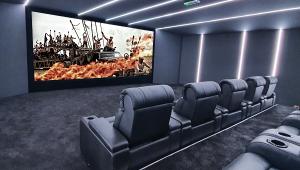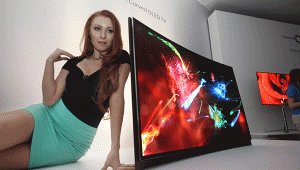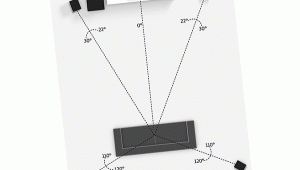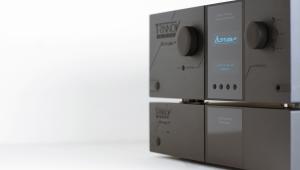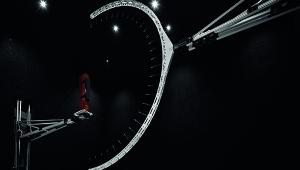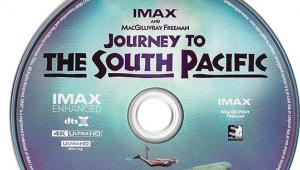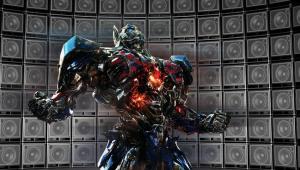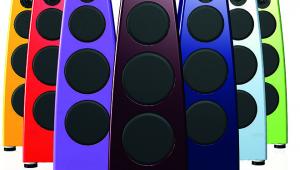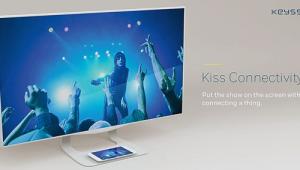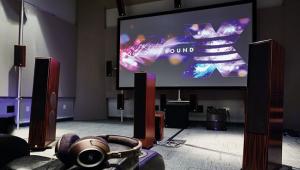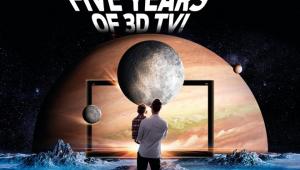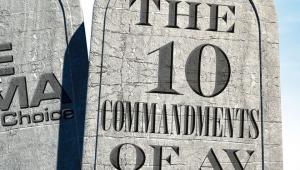California dreamin' – behind the scenes at JBL
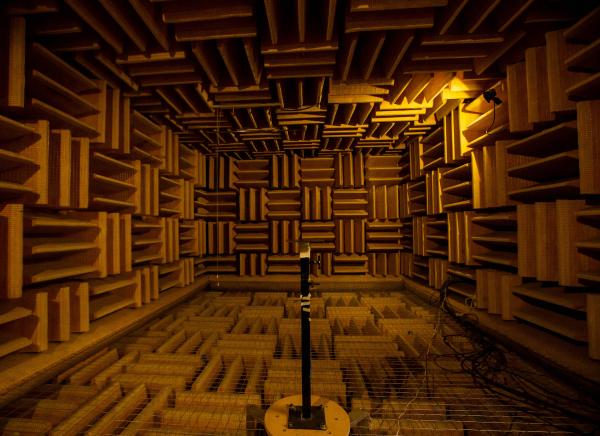
JBL is one of the most storied brands in hi-fi and cinema sound. Part of the larger Harman International portfolio (since 2017 a subsidiary of global behemoth Samsung), it's uniquely synonymous with theatrical sound systems, live music, and home audio.
So how did this American company become so ubiquitous? I travelled to the Harman Center of Acoustics Excellence, in Northridge, California, to unravel its entertainment ancestry.
Home cinema hero
Everyone can remember their first experience of high-end home cinema, and one of my first encounters with home theatre exotica came courtesy of JBL Synthesis. The progenitor of the immersive multichannel home cinemas we're now so familiar with, JBL Synthesis helped redefine what was possible to hear in your own home back in the early 1990s.
That first generation of JBL Synthesis hardware was absurdly powerful, inventively tailored for music and movies and, obviously, frighteningly expensive. Back then, of course, we didn't have Dolby Atmos – or, for that matter, Dolby Digital. But with premium analogue processing, impeccable amplification, and inspired loudspeaker design, JBL proved you could bring home a sound system that was considerably better than what you might hear in the average cinema of the period. Some thirty years on, JBL Synthesis remains every bit as revelatory.

Inside the Harman Center of Acoustics Excellence, I've taken up a prime position in the John Eargle Reference Cinema. This is a ten-seat movie room fitted with the latest generation of 'Synthesis kit, and it sounds as thrilling as you might imagine.
The team running the show concede the specification may be a little over the top for the size of the room, but they shouldn't apologise. Its performance is glorious.
Listed as a 13.4.13 system, there are 13 speakers on the lower level, and 13 overhead, with ten subwoofers in play. 'The term Synthesis means to bring multiple components together to make a whole, and that's what this is. It's as top-of-the-line as you can get,' enthuses Kevin Kent, global line manager for JBL Synthesis.
Flagship Synthesis SCL-1 speakers are used for the L/C/R stage, resplendent with 3in compression drivers and dual 12in woofers; around the rest of the lower level are slightly more down-to-earth SCL-2 in-walls, with 8in woofer trios and 1.5in compression drivers, while height duties are handled by SCL-3 enclosures (2 x 5.25in woofers, 1in compression unit). There are then two 2x15in Synthesis SSW-1 subwoofers to the front, and a pair of 2x10in SSW-3s at the back.
'The reason we have multiple subwoofers around the room is to have an equal experience for all the seats,' I'm told – although when you're the company that makes them, I guess you can have as many as you want.
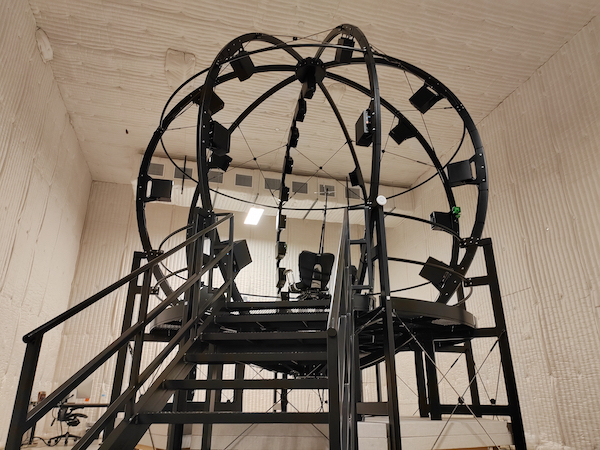
To put the subs through their paces, Kent plays the pounding electronica of 'Boom', by Tiësto and Sevenn; it's an immersive mix of astounding profundity. The room pressure-loads like a bathysphere in the Mariana Trench.
This is followed by the 'Never Enough' performance from The Greatest Showman, which raises more goosebumps than I was expecting, then a high-octane action sequence from Top Gun: Maverick, which leaves me giddy with delight.
Driving the system is an SDP-75 3D surround processor, which handles all immersive audio processing, and what must be a gazillion watts of amplification.
Hear one, want one
The system in the John Eargle theatre, named after the JBL audio engineer and Oscar winner, will set you back $250,000, just for the audio hardware. JBL sells something like five such arrays a year, but you can get a (smaller) Synthesis rig for your home for much less. '95 per cent of clients that come to hear a Synthesis system in this room, buy one,' I'm warned.
JBL's expertise in film audio shouldn't come as a surprise, because the company's roots track back to the formative days of cinema sound.
In the early 1930s, not long into the 'talkies' era, the only loudspeaker used in commercial theatres was a one-way enclosure developed by Western Electric. The trouble was these primitive speakers couldn't service 5,000+ seater auditoriums. As movies became ever more visually spectacular, cinema sound was lagging behind. Studio MGM decided to put together an in-house team of five engineers and charge them with figuring out a better way to provide sound reinforcement in a movie theatre. One of those engineers was James B. Lansing. The group came up with the Shearer Horn system, the first two-way cinema speaker, and cinema sound was changed for the better.
The Shearer Horn speaker went on to win a Scientific Technical Award from the Motion Picture Academy in 1936, and MGM sold the intellectual property of that model to the five engineers responsible. They then started a company called Altec Lansing, but eventually James B. Lansing left that organisation to form JBL, further developing cinema sound speakers based on horn technology.
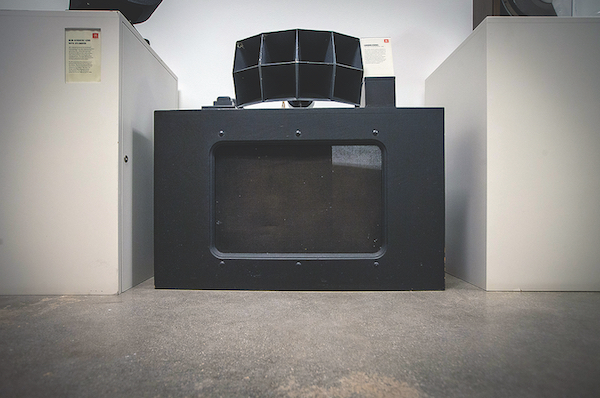
Skip forward a decade or two and JBL's involvement in movies inevitably brought it to the attention of the music industry. In the late 1960s it introduced the 4310, a studio monitor that was the inspiration for the L100 home audio speaker released in 1970 (and recently reborn as the L100 Classic).
JBL had begun designing audio for the home as early as the 1950s, however, with radical postmodern designs like the monstrous D44000 Paragon. This remarkable 2.7m-wide one-piece stereo loudspeaker stayed in production from 1957 until it was discontinued in the early 1980s.
Old meets new
Over the years, the company has won three technical Grammys for its contributions to culture and the arts, and is a long-time supporter of the Grammy awards. Walking into the Harman Center, I pass all three trophies, while elsewhere in Los Angeles you can tour the Grammy Museum. An ever-changing treasure trove of musical history, it features one very cool attraction that allows you to hear what contemporary artists would have sounded like on various historical sound formats, from wax cylinder to immersive 3D.
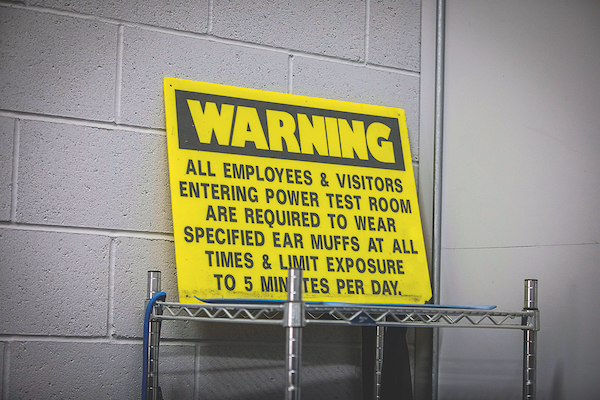
As I walk around the Harman campus, it's clear that R&D is a major preoccupation. There are seven anechoic (reflection-free) chambers on site, used to test and evaluate speakers. Audio is measured as it emanates from the speaker, not as it reverberates in the room with hard surfaces. Standing in one, all I can hear is the blood pumping through my head. It's a very weird experience.
I'm also invited into a torture chamber where the Harman team literally drive loudspeakers to the point of destruction. Ear defenders protect me against grinding, repetitive tones, but there's no escaping the smell of burning voice coils...
Major league player
To prove its pre-eminence in the professional audio world, JBL concludes my tour with a demonstration of a pro-grade speaker array with coordinated stage lighting. Electronica artist Celldweller's interpretation of John Williams' 'Imperial March' is chosen to kick off. It's quite the showstopper.
However, while this professional array plays loud, it's nothing compared to the audio in the neighbouring BMO Stadium, where it's turned up to eleventy-stupid.
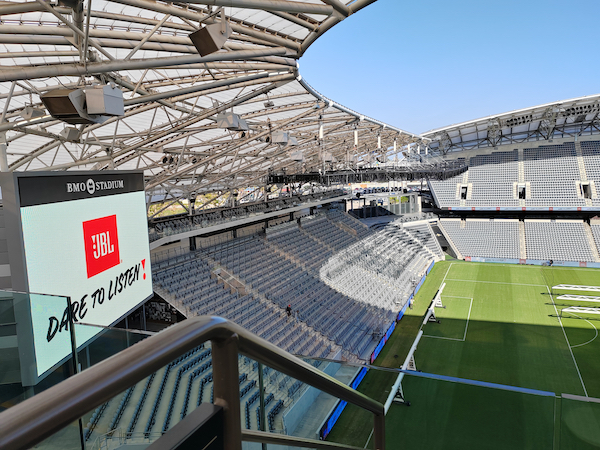
Designed by architecture giant Gensler, BMO Stadium is the home of Major League Soccer's Los Angeles Football Club (LAFC), and the National Women's Soccer League's Angel City. Opened in April 2018, it's a stunning 22,000-seat stadium completely kitted out with Harman/JBL professional gear. Some of the VIP levels look more like beach clubs and cruise liners than sports arenas.
Audio is delivered over IP using Harman's BSS fibre optic networking infrastructure, with control from sister CI brand AMX. The system takes the art of sound control and dispersion (a long-standing JBL expertise, as evidenced by its love of horn-loaded speakers) to another level.
LAFC's head broadcast engineer Mark Austin explains: 'Our list of JBL speakers runs for several pages. We use classic JBL speakers in some of our clubs, and professional arrays elsewhere. There are even plaster-over speakers, the JBL Concealed, providing ambience in hallways.'
I take a seat at the edge of the football pitch and the entire audio system is cranked up – it's as thunderous as you might expect a football stadium to sound. But wander a few metres onto the pitch and the volume begins to dip significantly. Rather cleverly, while tunes are banging around the grandstands, players are barely aware of the hubbub. It's the very definition of expert sound control.
Can the sound system in a football stadium be described as high fidelity? Hardly. This is something else altogether.
 |
Home Cinema Choice #351 is on sale now, featuring: Samsung S95D flagship OLED TV; Ascendo loudspeakers; Pioneer VSA-LX805 AV receiver; UST projector roundup; 2024’s summer movies; Conan 4K; and more
|


